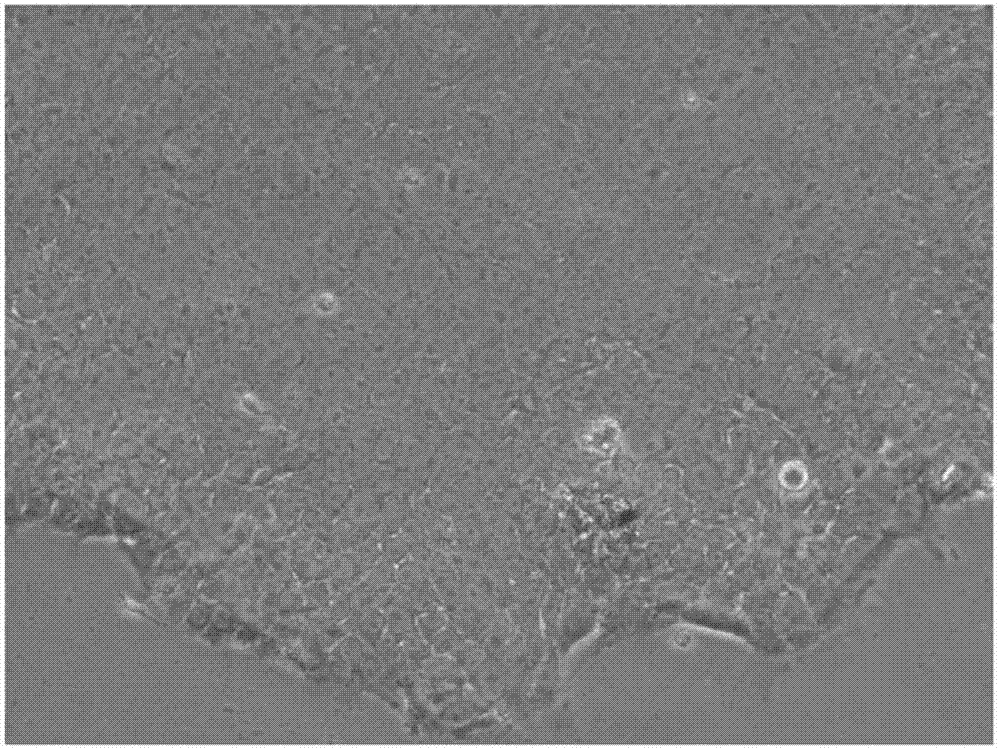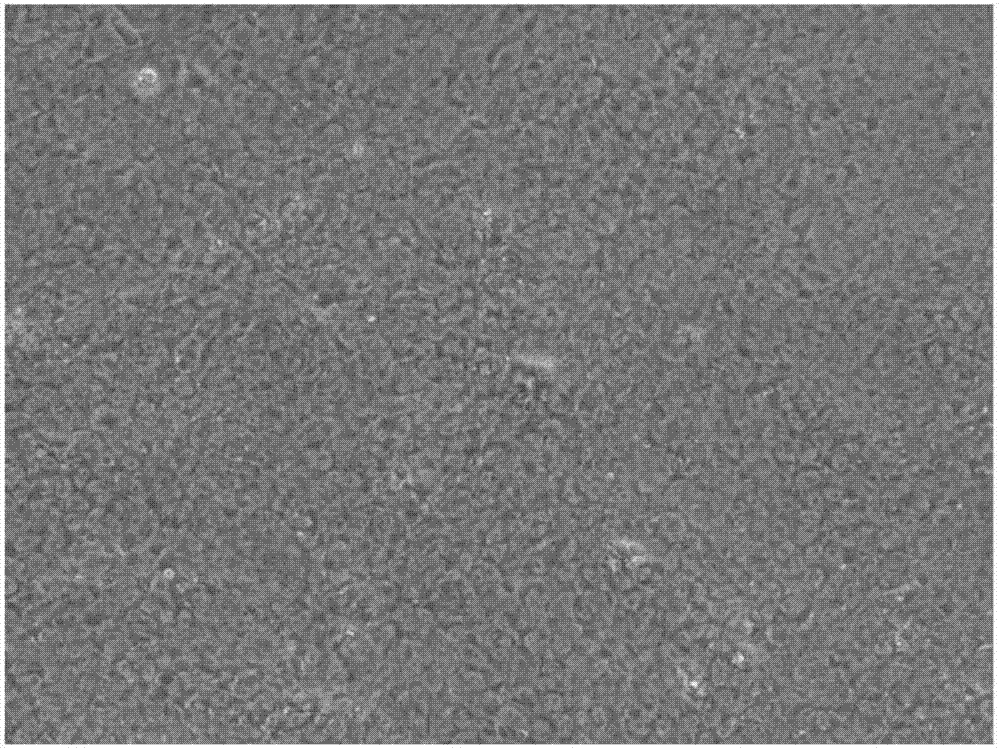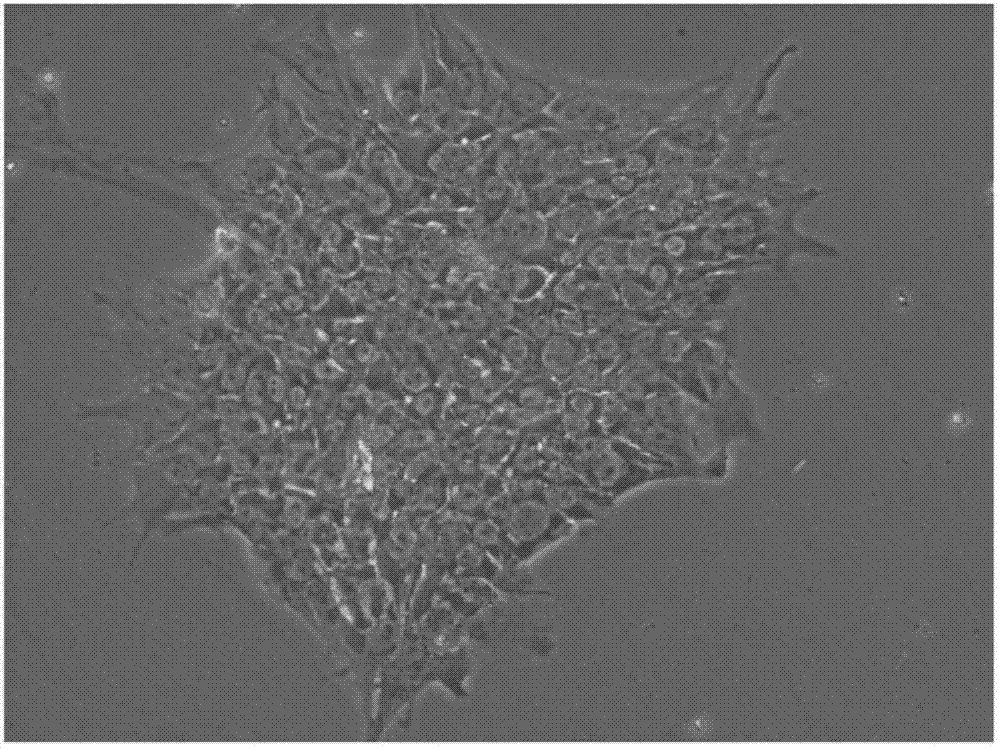Method for neuroepithelial cells differentiation from pluripotent stem cells and medium using same
A technology for neuroepithelial cells and induction medium, applied in cell culture active agents, biochemical equipment and methods, embryonic cells, etc. The effect of shortening the differentiation time
- Summary
- Abstract
- Description
- Claims
- Application Information
AI Technical Summary
Problems solved by technology
Method used
Image
Examples
Embodiment 1
[0056] Example 1: Making embryonic stem cells into embryoid bodies
[0057] Human embryonic stem cells TW1 were cultured at 37°C, 5% CO 2 Then the cultured embryonic stem cells were cultured as small cell aggregates in suspension culture in DMEM-F12 medium containing 20% serum substitute (knock-out replacement serum; KSR; Invitrogen, USA), and 37°C, 5% CO 2 The conditions were cultured for 2 days, so that the embryonic stem cells coalesced into cell clusters of embryoid bodies (embryoid bodies).
Embodiment 2
[0058] Example 2: Neuroepithelial cell induction differentiation phase
[0059] The cell mass of the embryoid body in Example 1 was transferred to a 15 ml centrifuge tube, and the supernatant was aspirated after allowing the cells to settle at room temperature. Prepare 500 mL of the first neural induction medium, the composition of which is shown in Table 1 below, and add the drug Bio at a concentration of 0.5 μM (0.5 μmol / L, the same below), the drug SB431542 at a concentration of 10 μM, and the drug SB431542 at a concentration of 10 ng / mL Fibroblast growth factor 2; It should be noted that the individual concentrations of the components of the first neural induction medium are not limited to those described above, specifically, the concentration of the drug Bio can range from 0.05 μM to Between 50 μM, the concentration range of the drug SB431542 is between 1 μM and 100 μM, and the concentration range of the fibroblast growth factor 2 is between 1 ng / mL and 100 ng / mL.
[006...
Embodiment 3
[0063] Example 3: Neuroepithelial cell induction differentiation phase
[0064] Take the neuroepithelial cells in Example 2, replace the first neural induction medium with the second neural induction medium, and add fibroblast growth factor 2 with a concentration of 10 ng / mL, and update the second neural induction medium every 2 days. The second nerve induction medium is used to further differentiate the neuroepithelial cells, wherein the composition of the second nerve induction medium is shown in Table 2 below.
[0065] The cultured and differentiated cells were observed under a microscope with a microscope magnification of 100, 200 and 400 times, and the results are shown in Figure 3 and Figure 4, wherein, by Figure 3A It can be seen that the uniform shape of the cells and the tight columnar shape around the spherical structure; Figure 3B It can be seen that the cells have a spherical structure, and the surroundings are in a tight cylindrical shape and the central part i...
PUM
| Property | Measurement | Unit |
|---|---|---|
| concentration | aaaaa | aaaaa |
Abstract
Description
Claims
Application Information
 Login to View More
Login to View More - R&D
- Intellectual Property
- Life Sciences
- Materials
- Tech Scout
- Unparalleled Data Quality
- Higher Quality Content
- 60% Fewer Hallucinations
Browse by: Latest US Patents, China's latest patents, Technical Efficacy Thesaurus, Application Domain, Technology Topic, Popular Technical Reports.
© 2025 PatSnap. All rights reserved.Legal|Privacy policy|Modern Slavery Act Transparency Statement|Sitemap|About US| Contact US: help@patsnap.com



